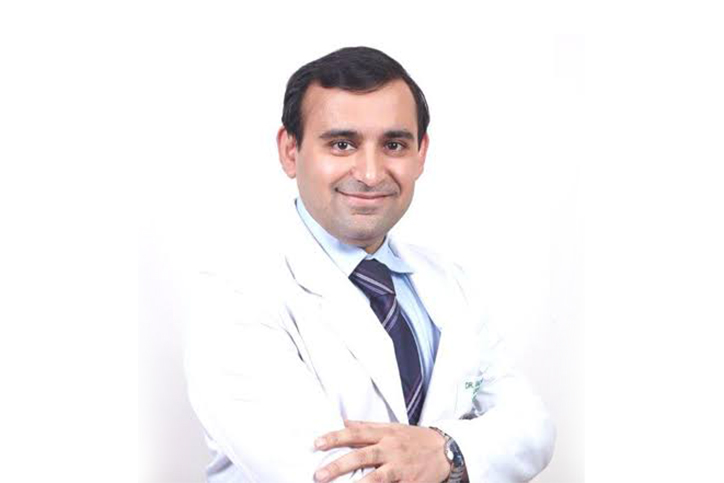
Dr Sachin Dhawan
MBBS, Diploma in Dermatology, MD – Dermatology
Dermatologist
22 Years Experience Overall (18 years as specialist)
……………………………………………………
GFC- A NOVEL GROWTH FACTOR CONCENTRATE THERAPY IN MANAGING ACNE SCARS
Acne is one of the commonest skin conditions encountered in dermatology OPD’s, but there is a paucity of literature addressing the knowledge, attitude and practice about it. While it’s often associated with puberty and adolescence, many adults deal with acne too, women in particular, where persistent acne and its ongoing breakout cycle can wreak the skin causing deep and lasting damage that leads to the development of scar tissue. For most people, having to live with acne scars without any improvement is an embarrassing situation.
DIFFERENT TYPES OF ACNE SCARRING
To better understand how such scars form, it’s useful to know that they happen when there’s loss of tissue in the deeper dermal layers. The medical term is “atrophic scars,” and these can vary in size and appearance. The following is a list of different types of atrophic acne scars:
Ice pick scars
Ice pick scars are small, hollow depressions on the skin’s surface. These typically occur on the cheeks and can be very difficult to treat due to their deep nature. Getting rid of ice pick scars can require a gradual, multi-step approach with procedures such as fractional laser resurfacing and TCA (trichloracetic acid) skin peels.
Boxcar scars
Boxcar scars are shallow to medium in depth with well-defined edges. You’ll find these types of scars located on the cheeks, jaw and temples. They’re easier to treat than ice pick scars because they are relatively superficial in depth.
Rolling scars
Rolling scars can occur at varying depths, with some areas being anchored to deeper structures. These types of scars are called “rolling” because they have sloping edges that give them a wavy and uneven appearance. Treating rolling acne scars requires a multi-step process over several visits, just as with ice pick scarring.
Other types of acne scarring
Hypertrophic or keloid scars are caused when the body produces excess collagen during the acne healing process, resulting in a mound of raised tissue on the skin’s surface. These are most common on areas such as the jawline, chest, back, and shoulders.
Post-inflammatory hyperpigmentation (PIH)
Technically not a scar, post-inflammatory hyperpigmentation is a patch of discolored skin (red or brown) that’s left behind after the acne heals. It will usually resolve on its own over time.
One of the pioneer therapies to curb the effects of Acne on skin is the GFC Therapy, that is built upon the Regenerative Medicine Principle of replacing or ‘regenerating’ human cells, tissues or organs to restore or establish normal function that is lost due to aging, disease, damage or defects by stimulating the body’s own repair mechanism to heal cells, tissues or organs. GFC Therapy is the Next-Generation Therapy, that is researched and developed by Wockhardt’s Regenerative Division, which is efficient, safe and convenient, and it is India’s 1st Autologous Ready-To-Inject Therapy kit.
Yuskin is highly concentrated GFC preparation prepared from patients own blood which helps to smoothen the scar resulting in better appearance regardless of skin tone. It works by causing mild inflammation in the scars that trigger the healing cascade and production of new collagen. The GFC also prompts an increase of skin elasticity and a smooth appearance to the scar. Its ability to be combined with topical as well as procedures such as micro needling, makes it more sought-after than age-old PRPs.
To know more about GFC Therapy visit our website www.gfctherapy.com
Ref:
- Gulanikar AD et al. Clin Dermatol Rev 2019;3(2):109-114
- Asler OH et al. Scars, Burns & Healing 2018;4:1-15
- https://dermnetnz.org/topics/acne-scarring accessed on 29 Sep 2022 at 9:00 am IST



